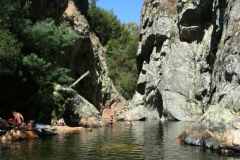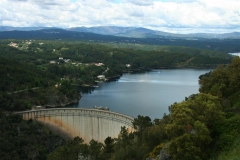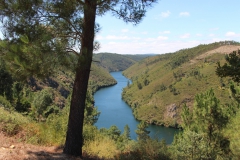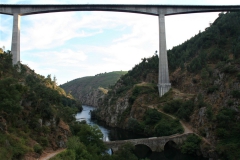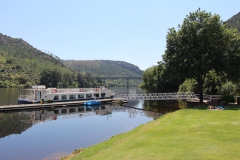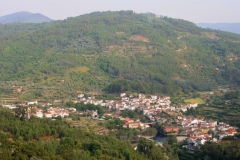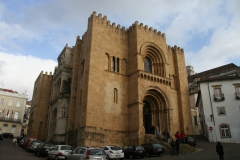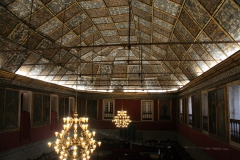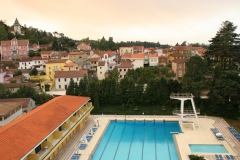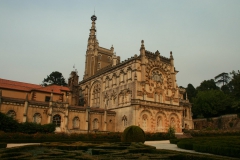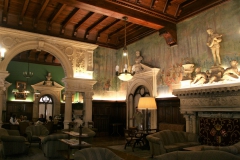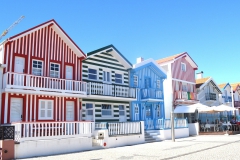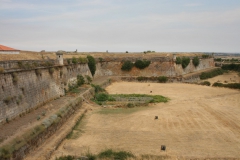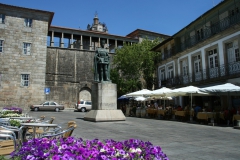Center
The following itineraries focus much more on our suggested routes in the map and the visual perspective through the camera lens so you can easily pick the places with the most appeal for you and create your own itinerary. Then there are thousands of travel guides and webpages for you to learn about each place. Nevertheless ask us anything about the itineraries or sites anytime. It will be a pleasure to help.
Itineraries
- Pinhal Interior
Tomar – Dornes – Fragas de São Simão – Pedrogão Pequeno – Álvaro – Orvalho – Lousã – Conimbriga - Beira Interior Sul
Vila Velha de Rodão – Castelo Branco – Idanha-a-Velha – Monsanto – Sortelha – Belmonte – Covilhã – Seia – Piodão - Beira Litoral
Coimbra – Penacova – Luso – Caramulo – Aveiro – Costa Nova – Praia de Mira – Figueira da Foz - Beira Interior Norte
Guarda – Almeida – Castelo Rodrigo – Castelo Melhor – Vila Nova de Foz Côa – Marialva – Trancoso – Viseu
Pinhal Interior
Departing this itinerary from Tomar, we can explore the beautiful lake of Castelo do Bode dam, the oldest in the Zêzere River valley to supply Lisbon with energy. In this big lake, there are many wonderful river beaches in its branches, like Aldeia do Mato, Penedo Furado and Trízio. Then we move on to Dornes, a beautiful village in the lake shore.
Driving north we reach Fragas de São Simão, an area of waterfalls and natural pools, hiking trails in the woods and recently a new boardwalk. Going now inland we find another big lake in Cabril dam. In this area there are several highlights in several categories. Pedrogão Grande is the main town and has a nice artificial swimming pool in the lake. On the other side of the river, Pedrogão Pequeno is picturesque and is in the schist circuit. Going down the Zêzere river, after the dam, we find a small paradise in Moinho das Freiras, a place to swim absorbing nature’s silence, or start a kayak journey. Nearby there is a 16th century bridge.
From Pedrogão Pequeno, take a small side stop by the Zêzere at Madeirã before heading to Álvaro, driving through the beautiful mountain landscape of Serra de Alvelos. In Álvaro enjoy the way the river curves like a snake as it’s named Meandros do Zêzere. Álvaro is a schist village and has a swimming pool in the river of warm waters.
Before heading to Serra da Lousã wonders take a look at the new Orvalho boardwalks and Janeiro de Cima and Janeiro de Baixo natural river beaches. In Lousã rests some beautiful schist villages in impressive mountain landscapes. Finish the itinerary in the most important roman ruins in Conimbriga.
Beira Interior Sul
We start this itinerary in Vila Velha de Rodão where can take a boat ride in the Tejo river to pass by the beautiful Portas do Rodão geological formation and watch a large griffon colony. Then we take a look at Portas de Almourão and move forward to Castelo Branco, the interesting region capital.
Going on to the 3 historical villages of Monsanto, Idanha-a-Velha and Penha Garcia where the traditional stone houses are beautiful. Sortelha is next and also a traditional stone village but a bit further away. Close to this area is Malcata Natural Reserve which holds an important habitat for the iberian lynx in the wilderness. We continue to Belmonte, an historical town for reasons that provide it two museums. For one, it is the birthplace of Pedro Álvares Cabral, the Portuguese navigator who discovered Brazil in 1500. Then it held one of the most important Jew comunities in Portugal even to the present days.
We now move on to Covilhã, an important interior town with a university and the eastern doorway to Serra da Estrela, the highest mountain range in Portugal’s mainland, reaching 2000 meters. When we get to Penhas da Saúde at 1600 m we begin to feel the remoteness and the beauty of these mountains where it snows frequently. We can take a look at the glacier valley where the Zêzere starts towards Manteigas. Then we drive up to Torre, the highest point, where there is a small ski resort.
On the west side of Serra da Estrela we drive down to Seia passing by the beautiful Lagoa Comprida and Sabugueiro village where we can buy amazing Serra da Estrela cheese. In Seia we visit the Bread Museum and go towards Piodão, probably the most famous schist village and then to Foz d’Égua a unique site nearby.
Beira Litoral
Coimbra was the capital of Portugal before Lisbon. Before you depart for this tour be sure to enjoy the beauties of this town very dear to the Portuguese. The royal palace 13th century is mostly still there and is today the main building of the University of Coimbra, one of the oldest in the world. The 18th century library next to the university is a marterpiece. Downtown in Santa Cruz Church, find the tomb of the first king of Portugal Afonso I. Fado de Coimbra is also something special here as it is different from the standard fado from Lisbon. It is sung by male students of the university in black capes and with different guitar strings.
Departing Coimbra by the Mondego valley we get to Penacova and then we’ll head to Luso, a small town on a mountain which holds a famous health spa. On top of that mountain there is an old royal palace now turned into a hotel, Bussaco Palace Hotel. The park around it was built by the king with species of plants and trees from around the world.
Then we move on to Serra do Caramulo, a very beautiful mountain range with incredible views in all directions. The largest Car Museum in Portugal is here. On our way back to the coast we’ll make a small detour to São Pedro do Sul, also a traditional spa town with several nature wonders around. If it is more handy visit Viseu now if you’re not doing in the next referred itinerary. It is an important worth visiting town.
Now driving west we’ll reach Aveiro, an important regional capital and university town. It is often called the Venice of Portugal because it sits on a maze of canals which can be explored on the traditional boats “moliceiros”. This area of canals is protected from the sea with only an exit for the boats. On the sea side the beaches are amazing, like Barra with its imposing lighthouse or Costa Nova with its traditional coloured stripes houses. If it suits you can drive south passing by the endless beaches of Praia de Mira and Figueira da Foz.
Beira Interior Norte
Guarda is the highest town in Portugal and also a good starting point to explore Serra da Estrela. It is a regional capital and lovely town with tradional stone houses from the mountain regions of Portugal.
This itinerary could also be called “The medieval castles Tour” because it will show you a bunch of small towns highlighted by the medieval castle walls and towers imposing on the region landscape. These forts used to be advanced line of military defense from the battles against Castille. In the same category we’ll include Castelo Mendo, Castelo Rodrigo, Castelo Melhor, Marialva and Trancoso. If you’re a medieval history fan, you’ll have plenty to enjoy. We left Almeida apart from the others because it is a spectacular star shaped fortification with 12 points from the 17th century, a unique defense system in Europe. The town is inside the fort.
The other major attraction of this itinerary is one of the most important sites in the world of pre-historic art from the Paleolithic. In the entire Côa valley we can watch animals carved in the stones 25000 years ago. The Museum and surround area is very well organized.
We finish this tour in Viseu, a beautiful town with a lovely historic center featuring the Cathedral and Misericórdia Church. This region was the hometown of Viriato, the famous “lusitano” chieftain from 180 b.C. who fought the Roman invaders.


